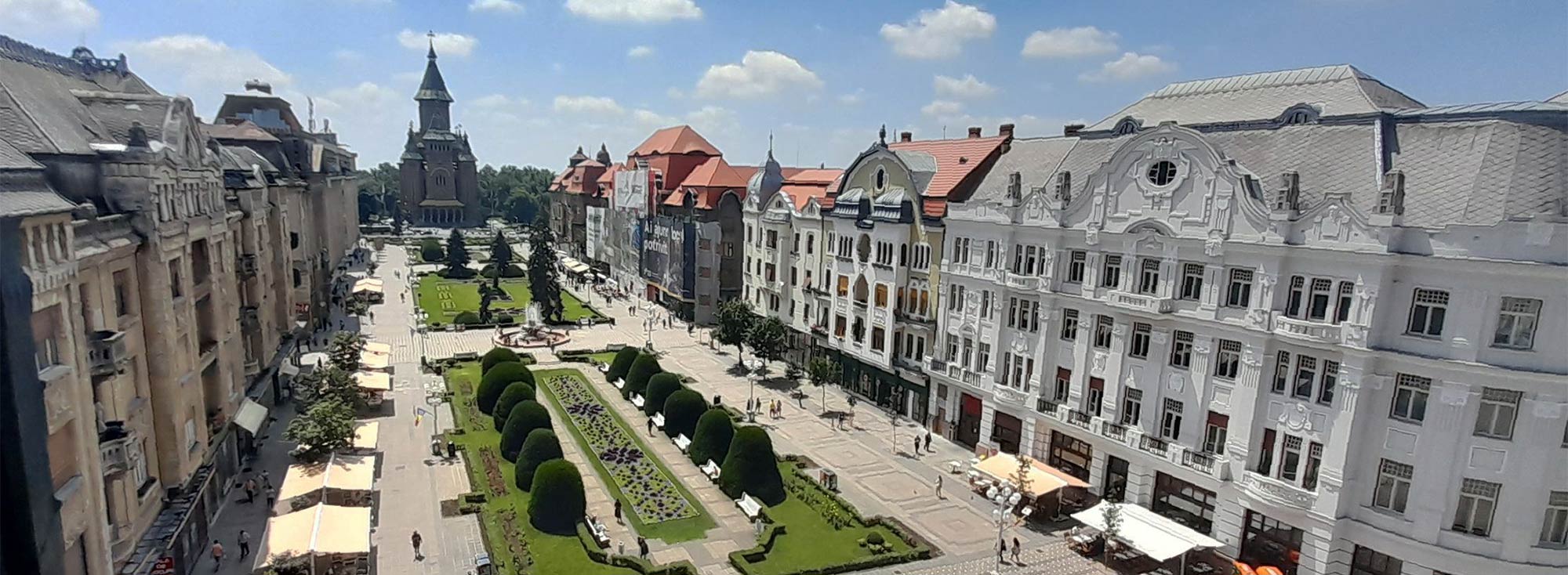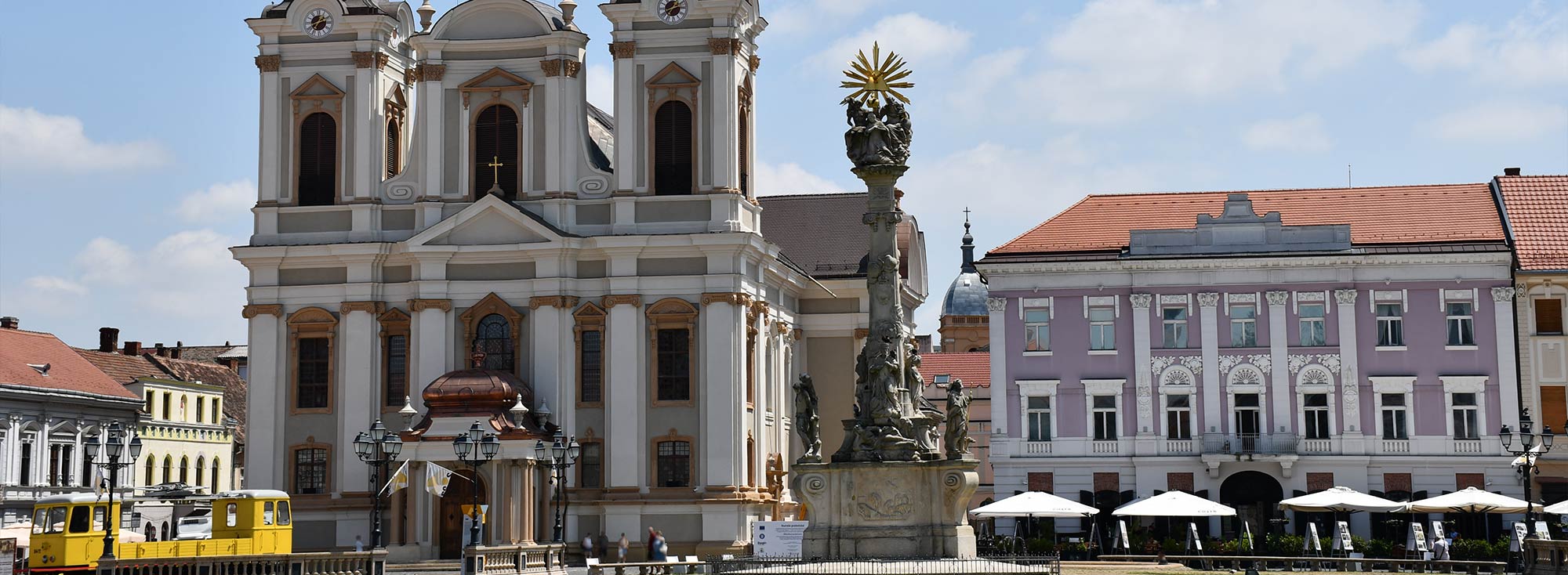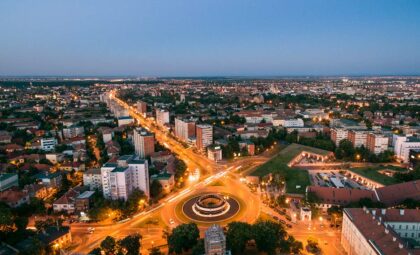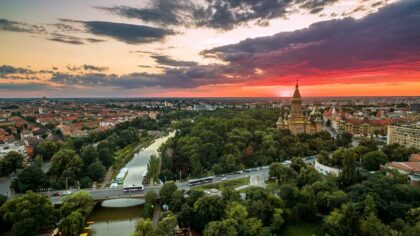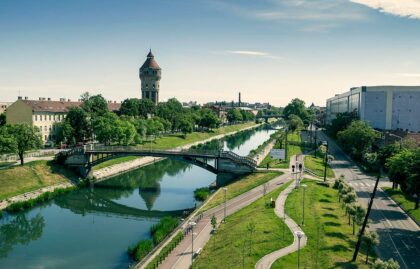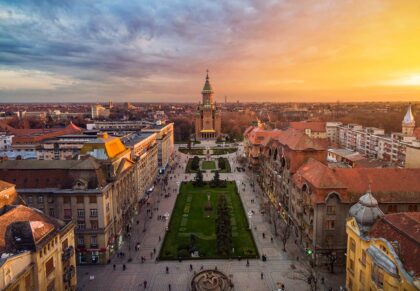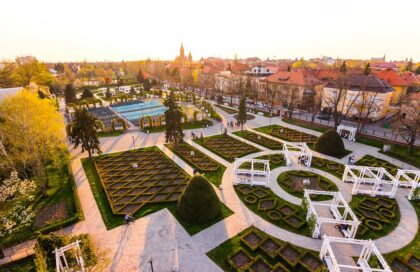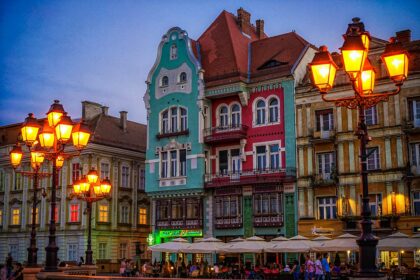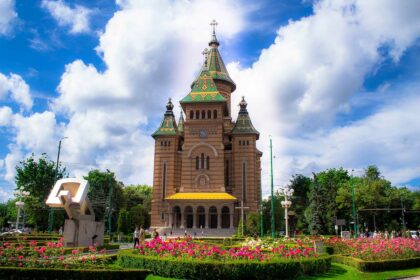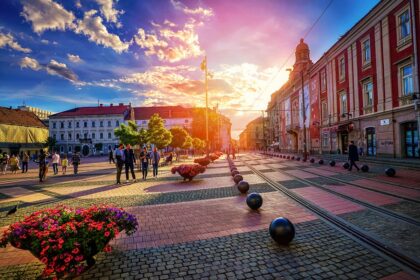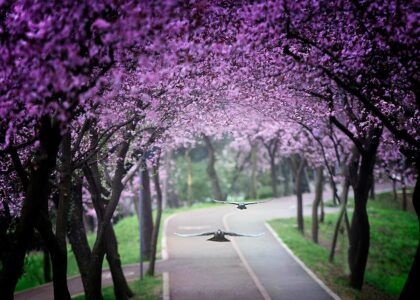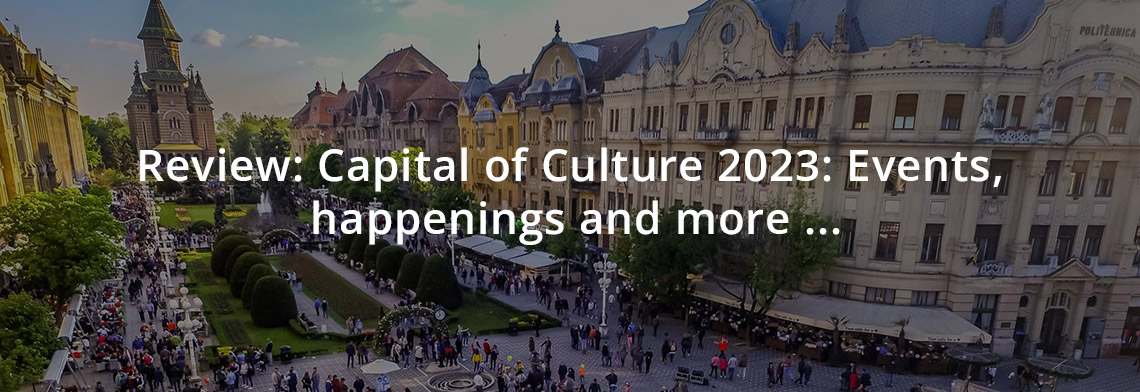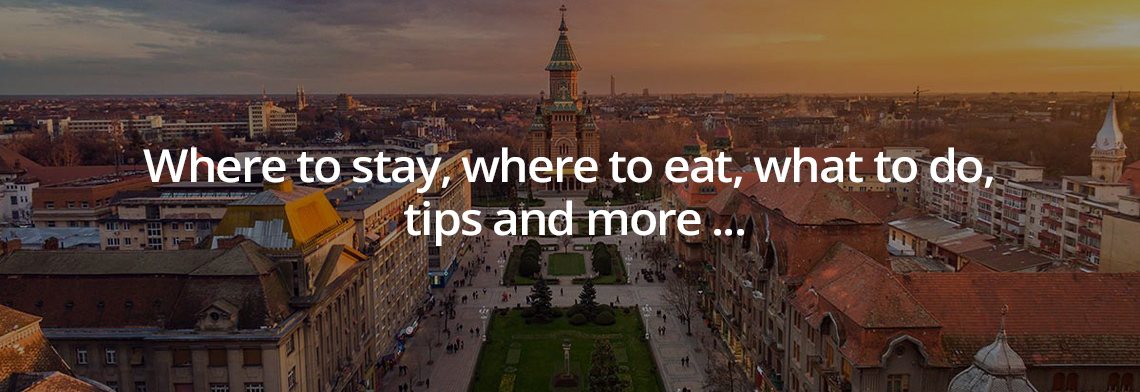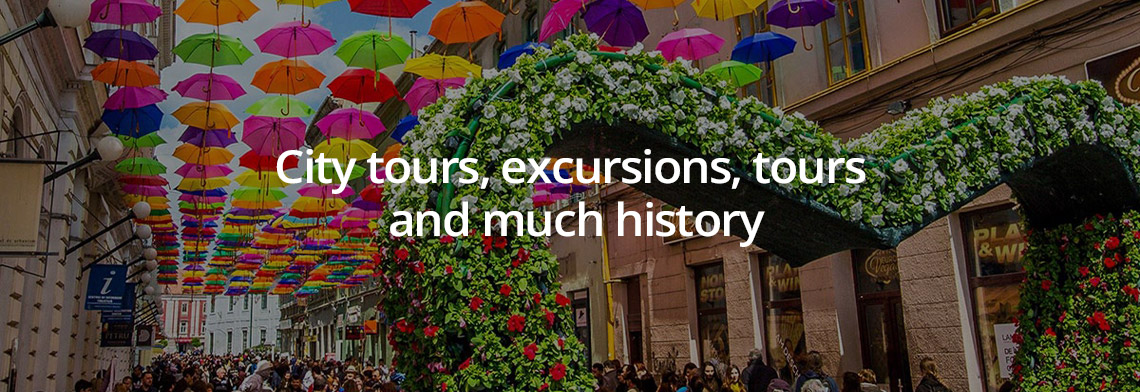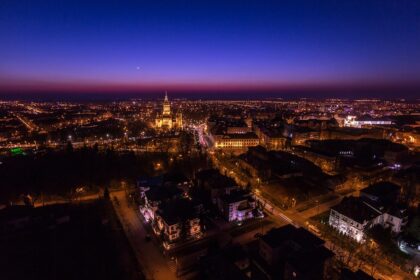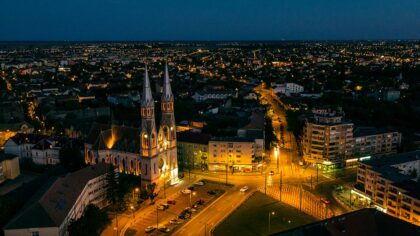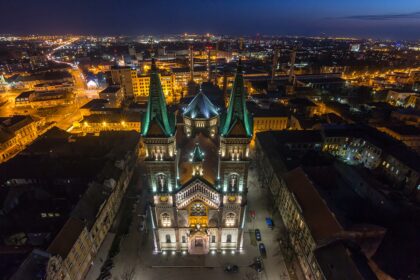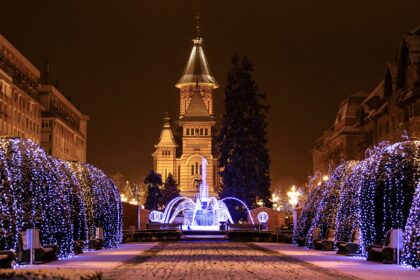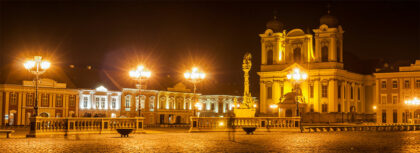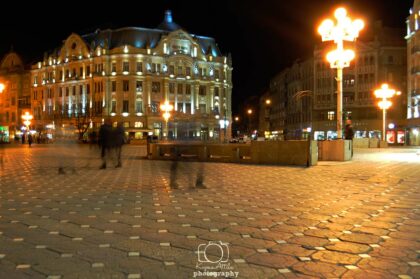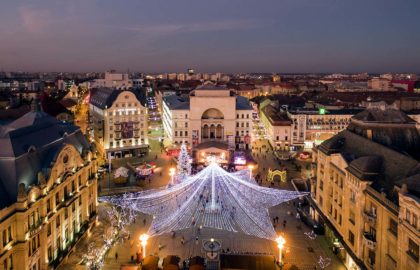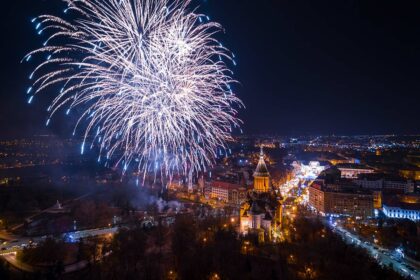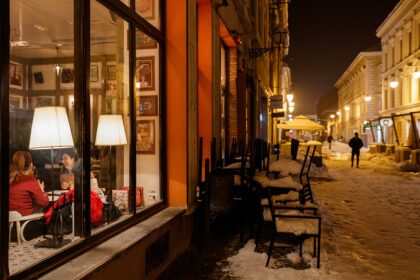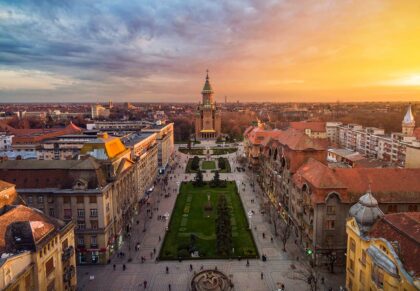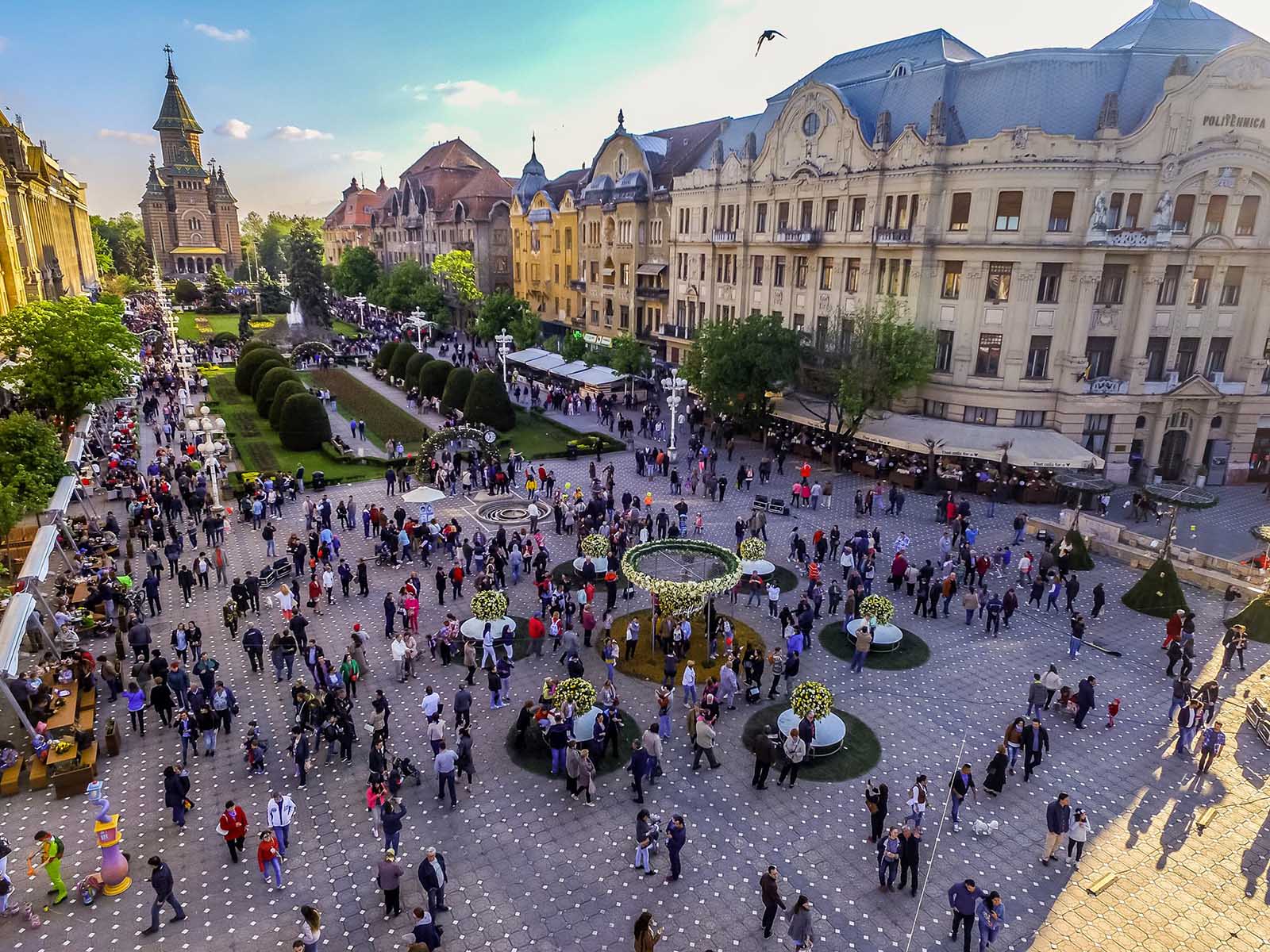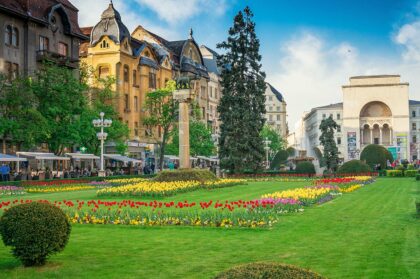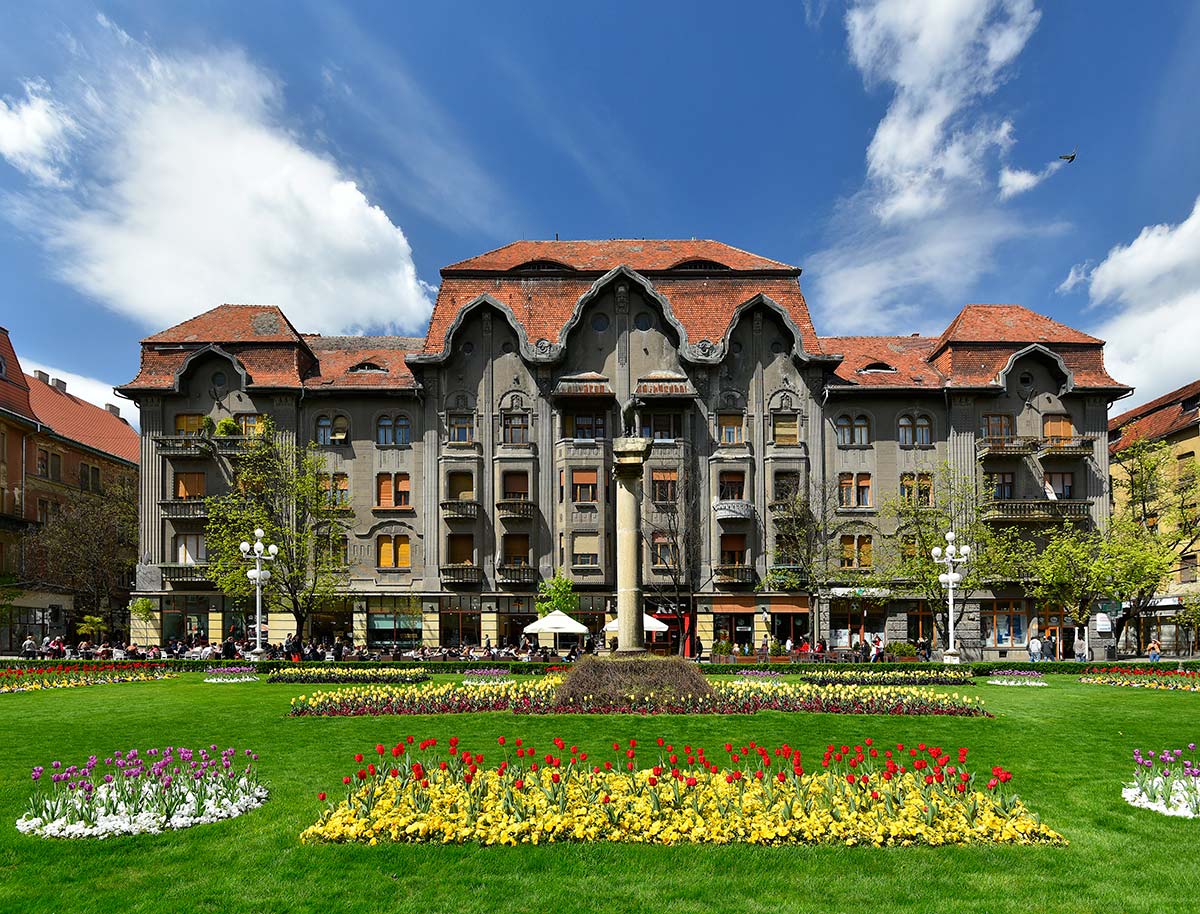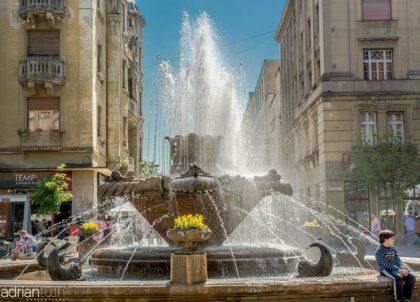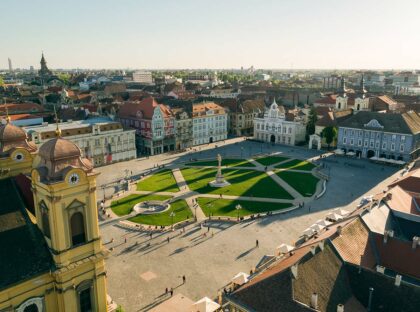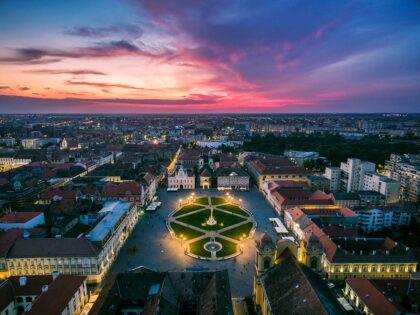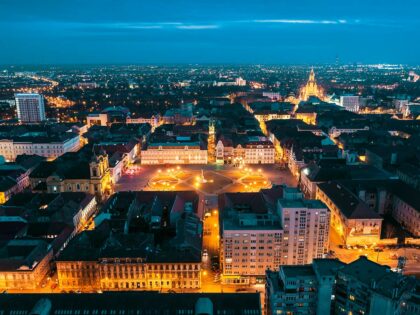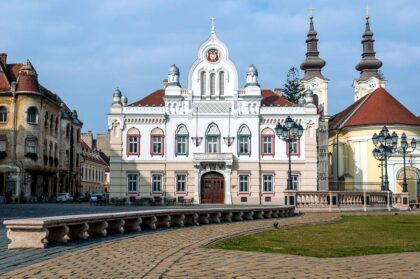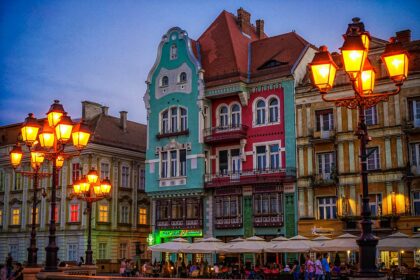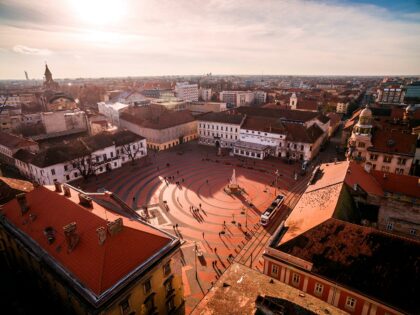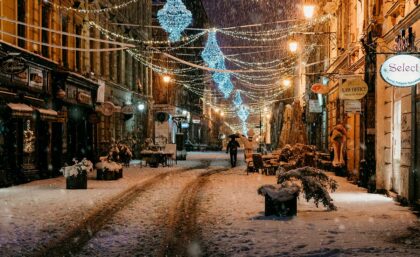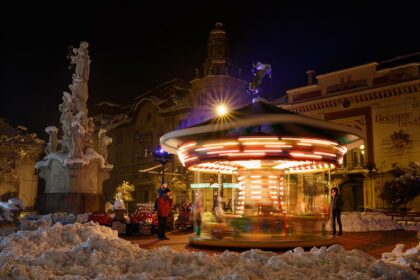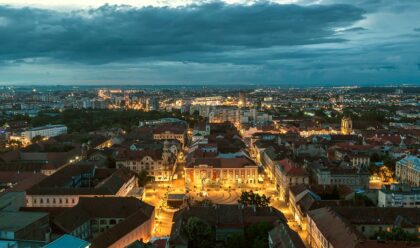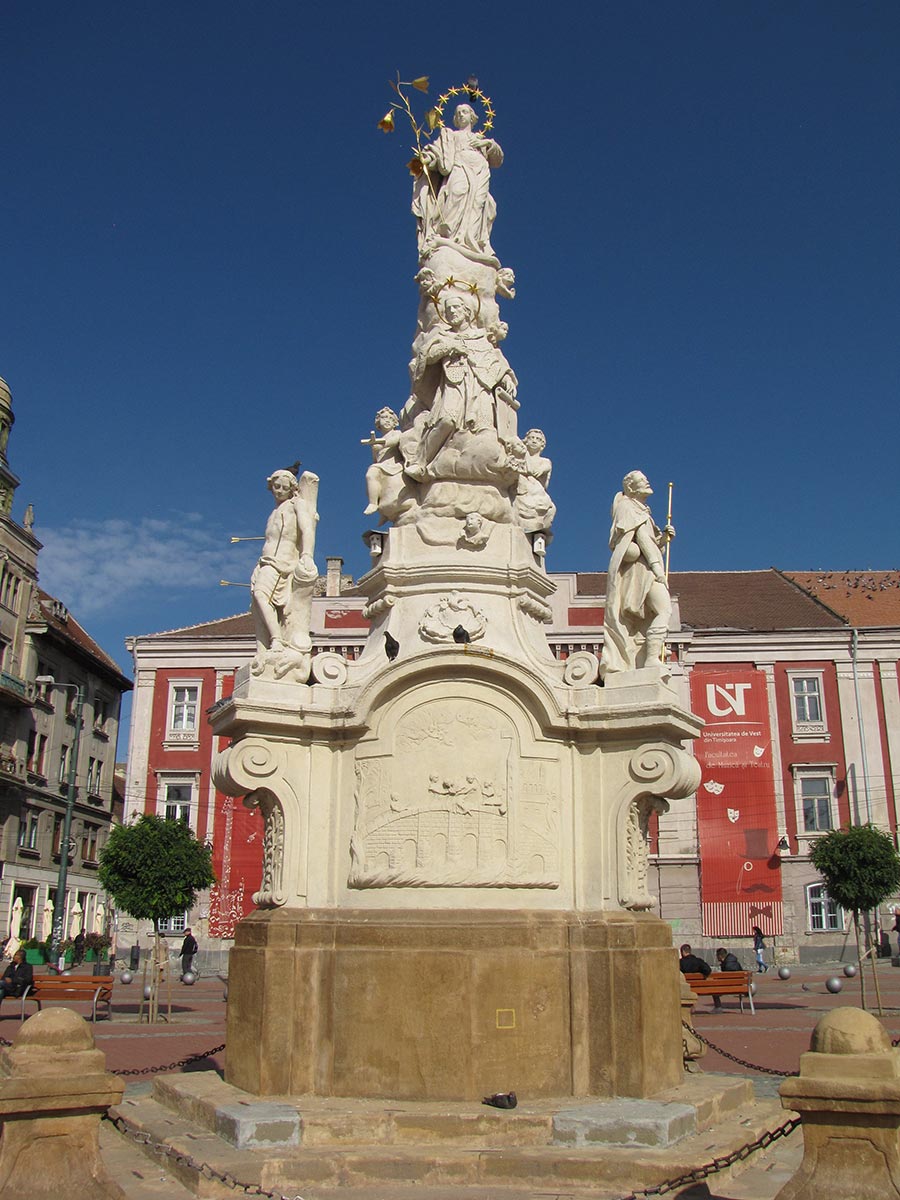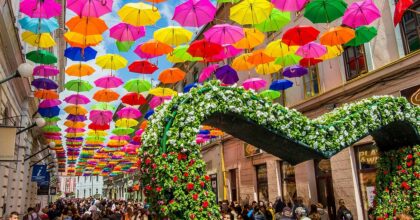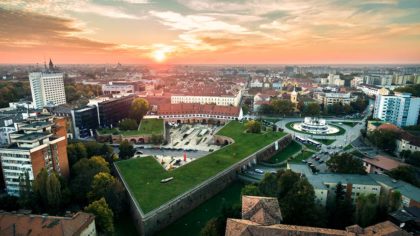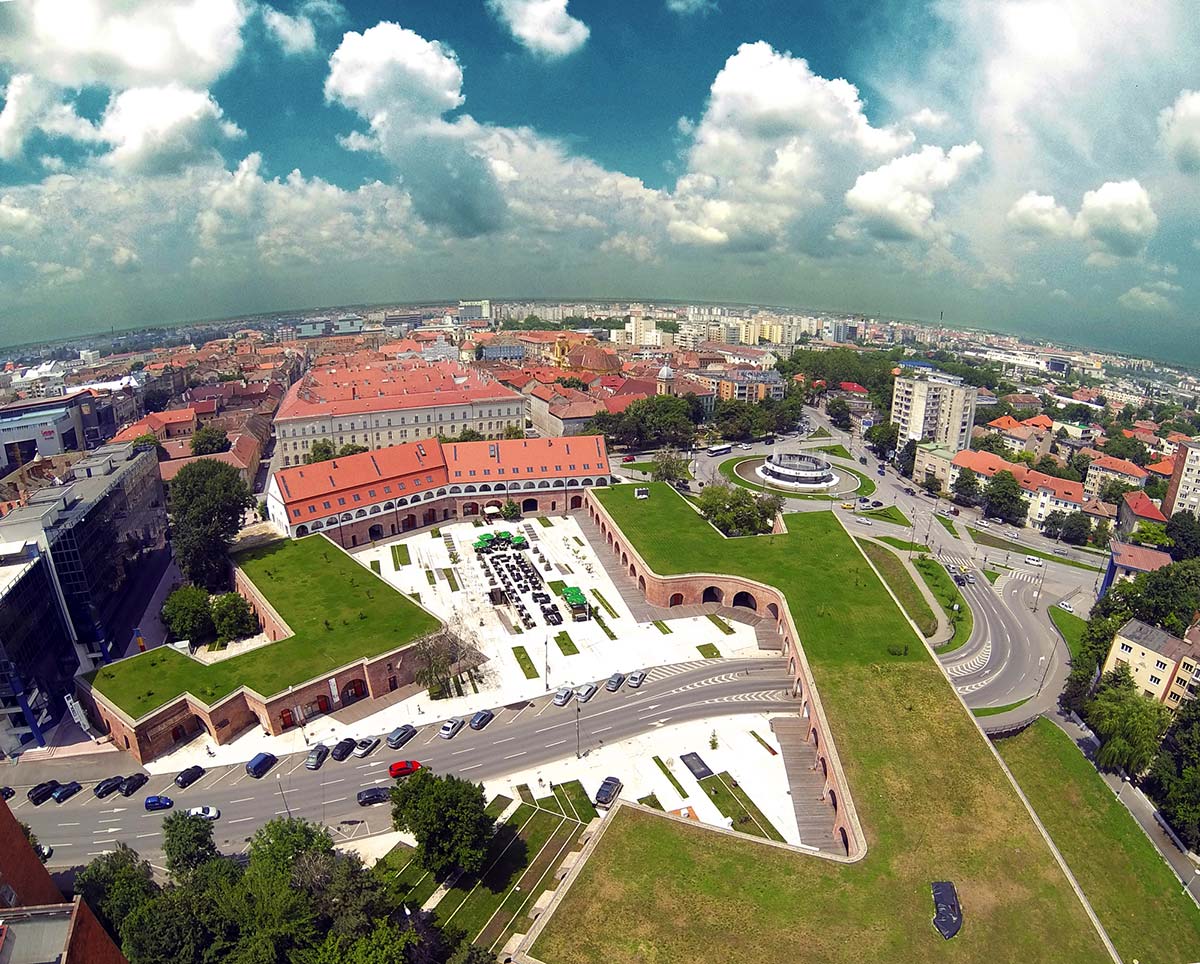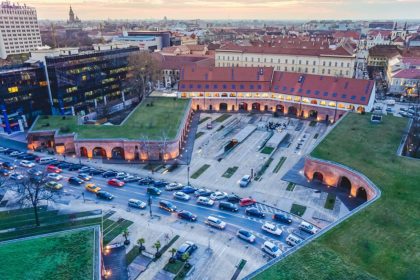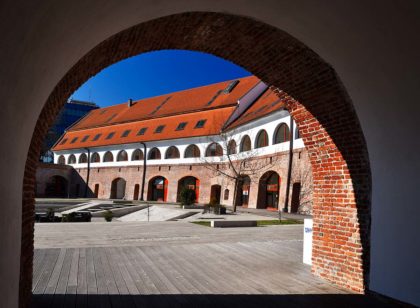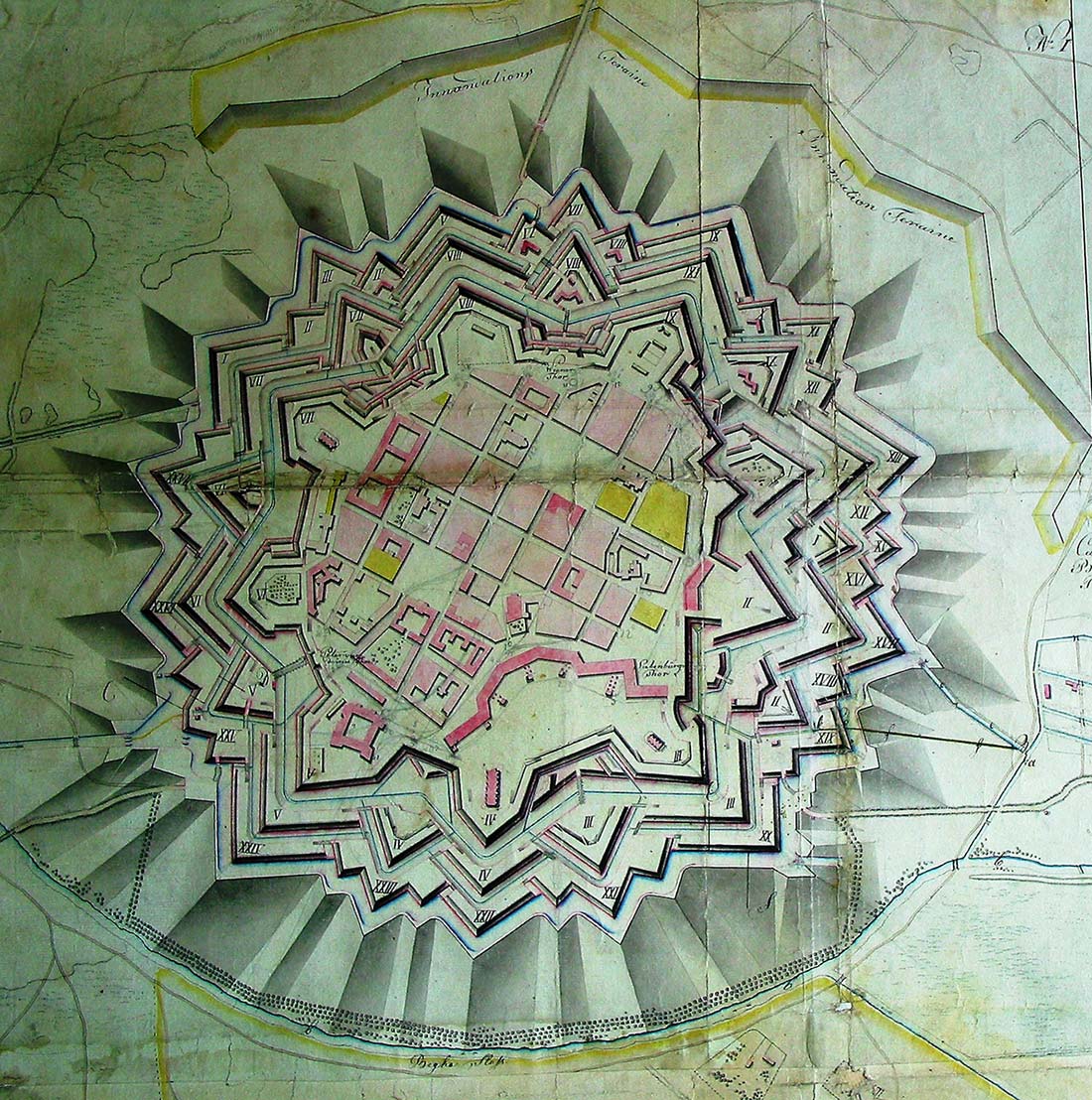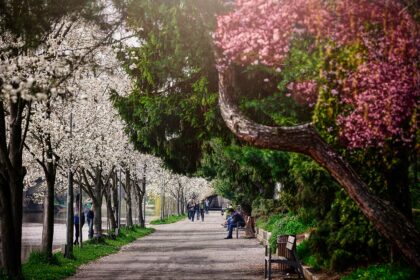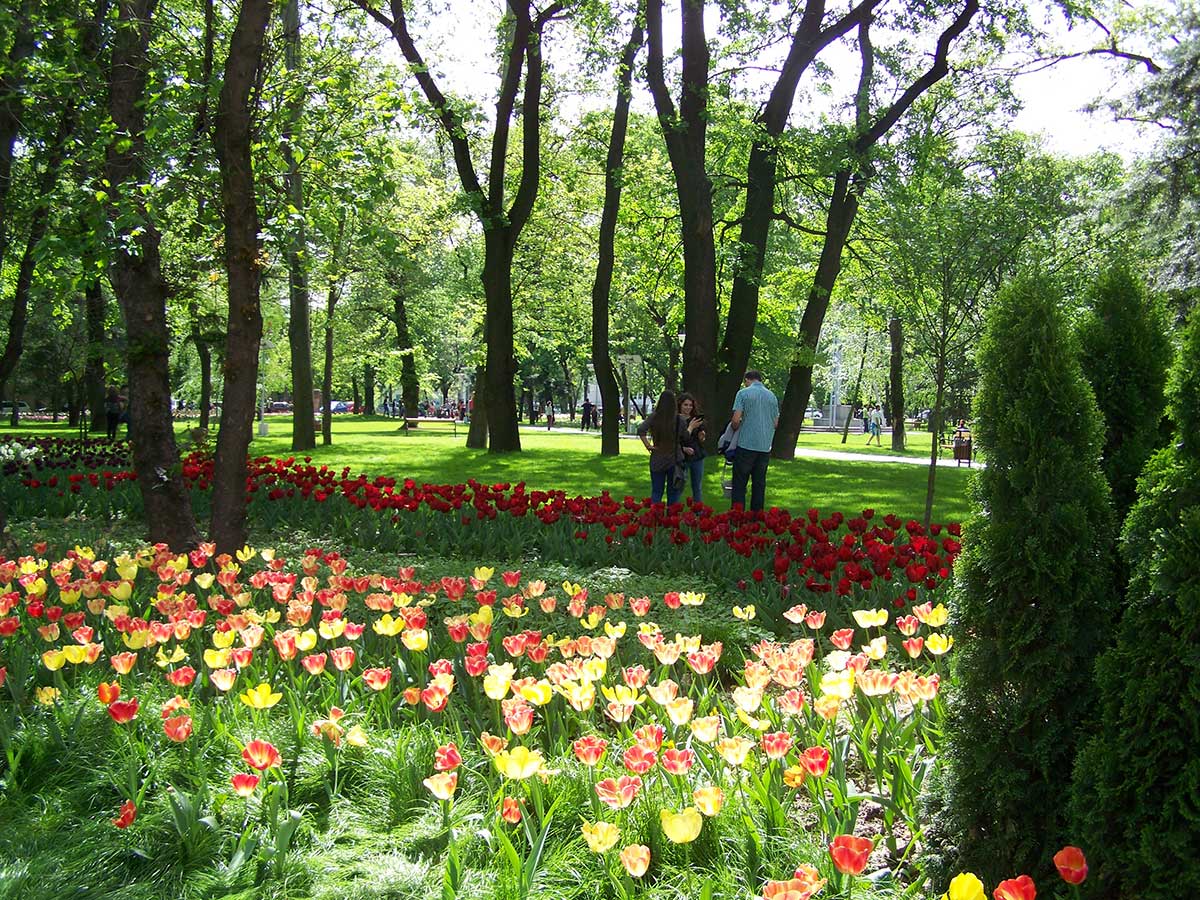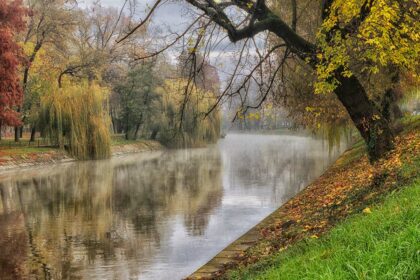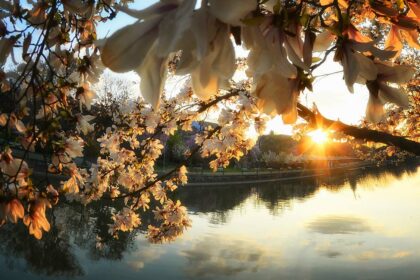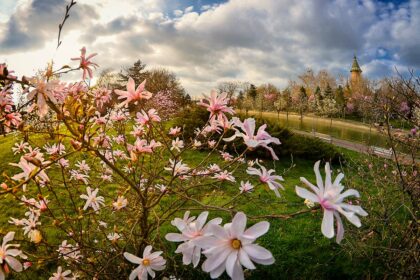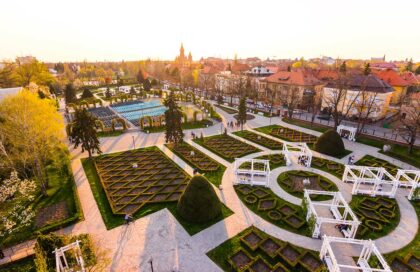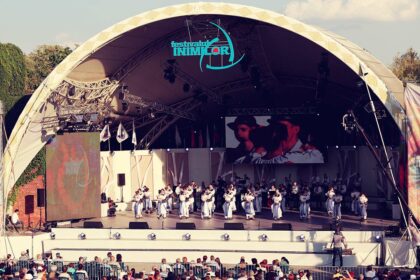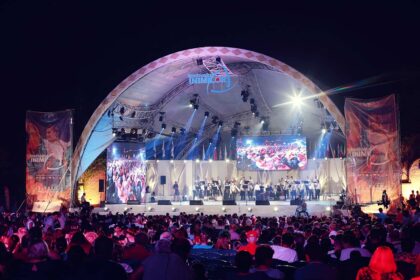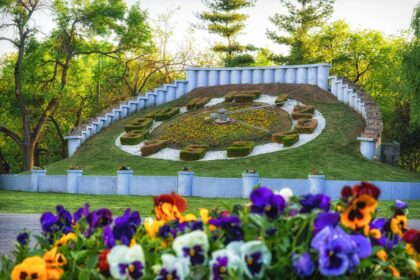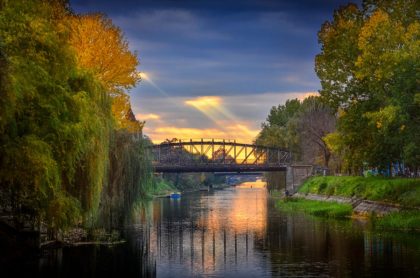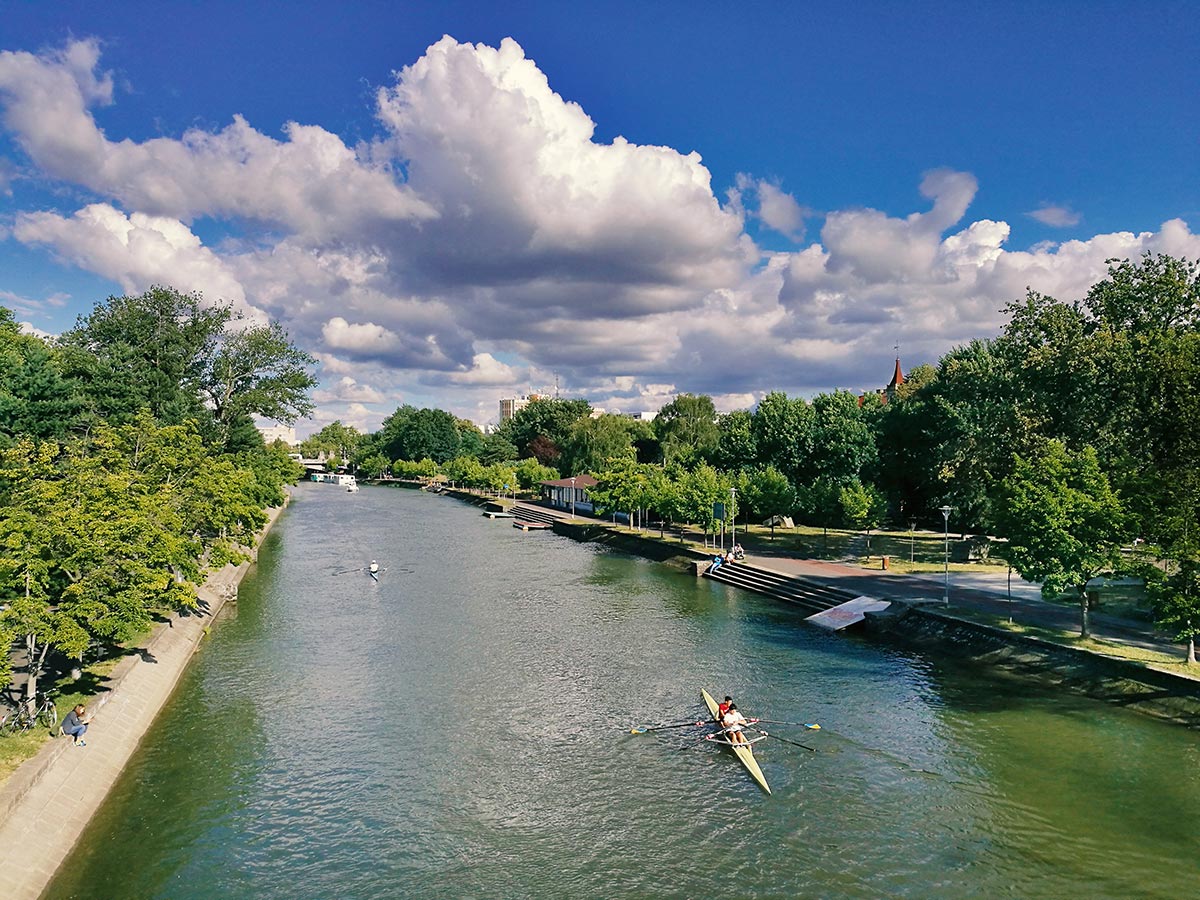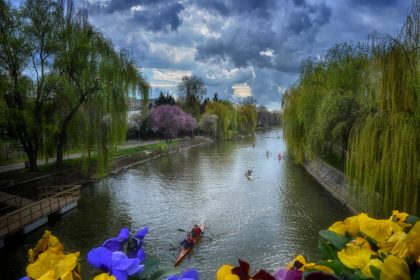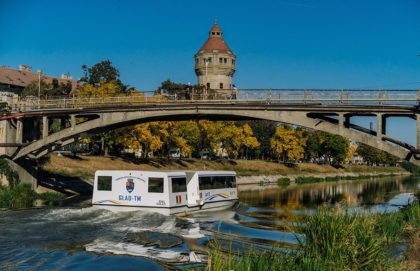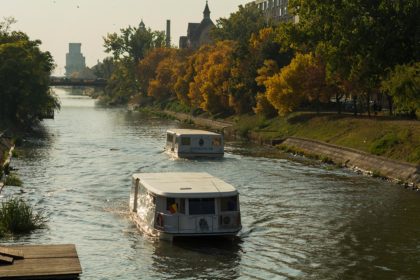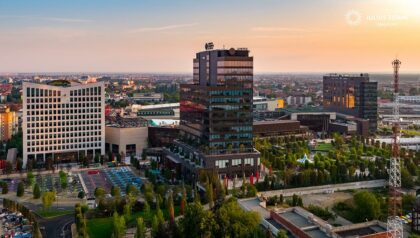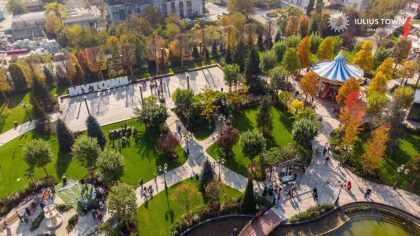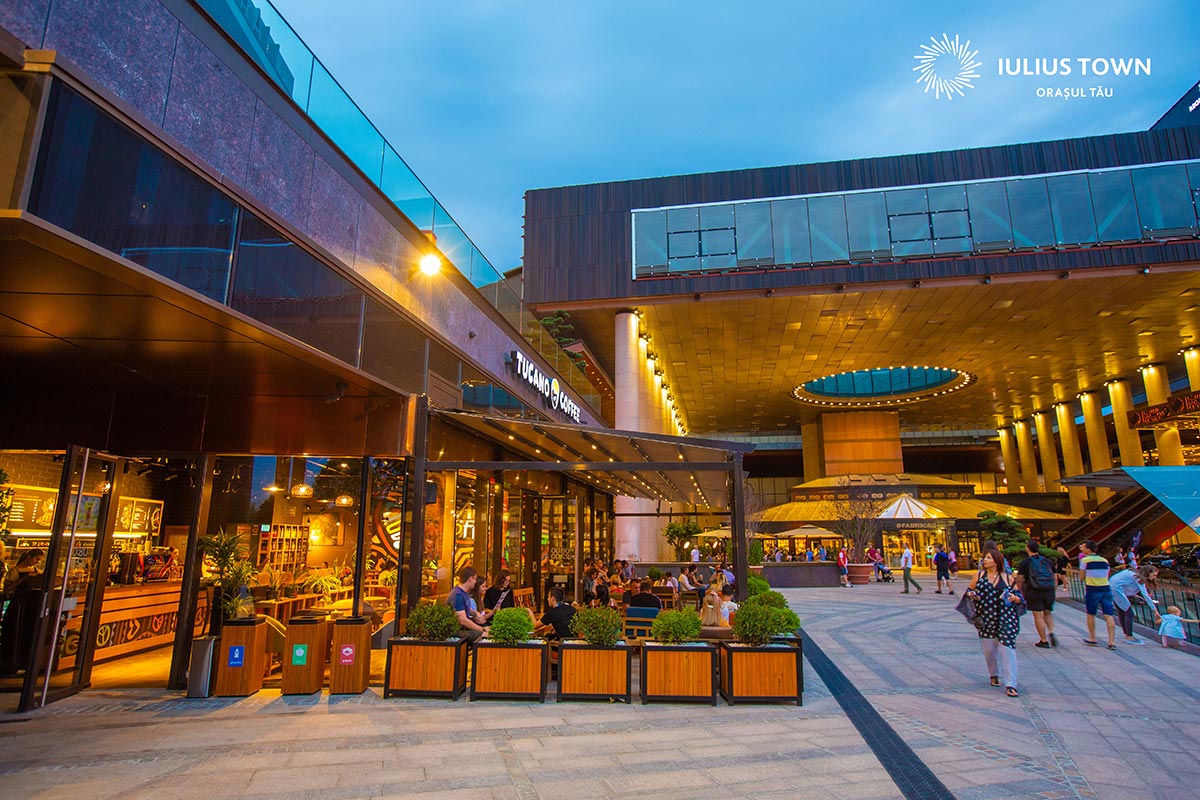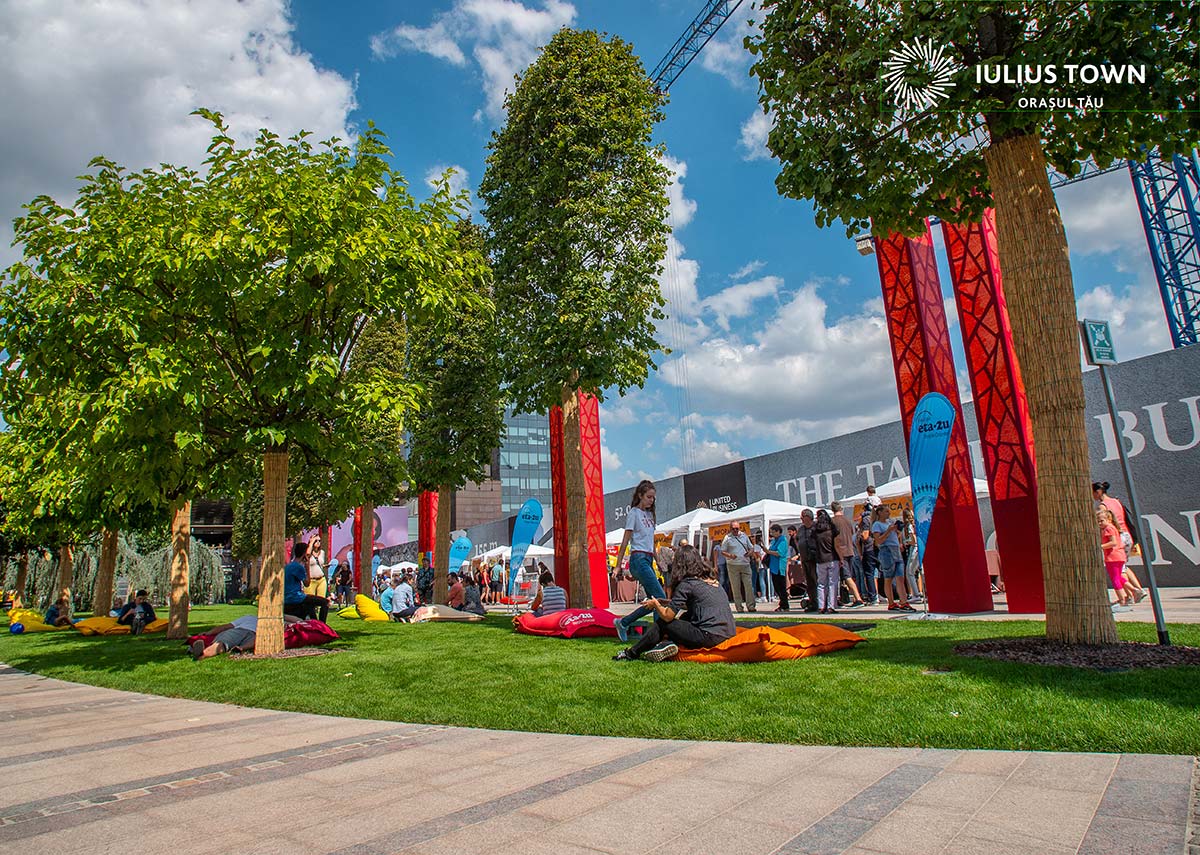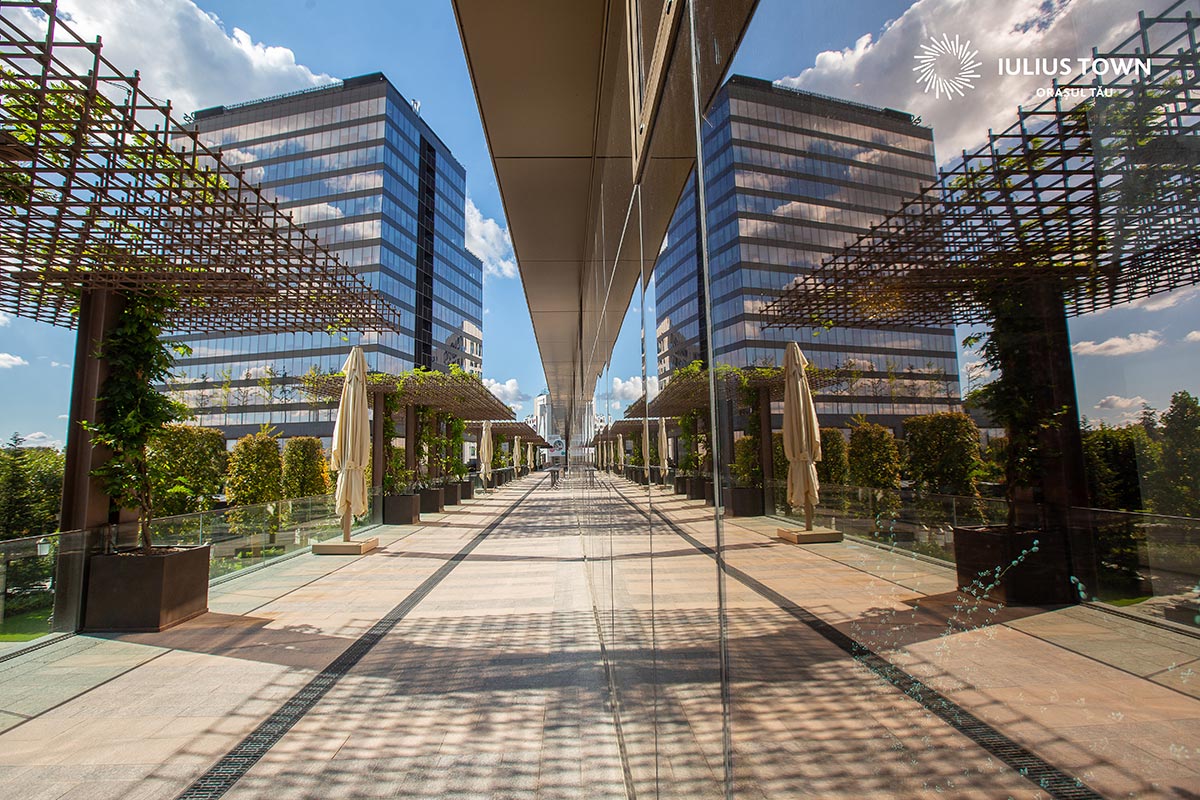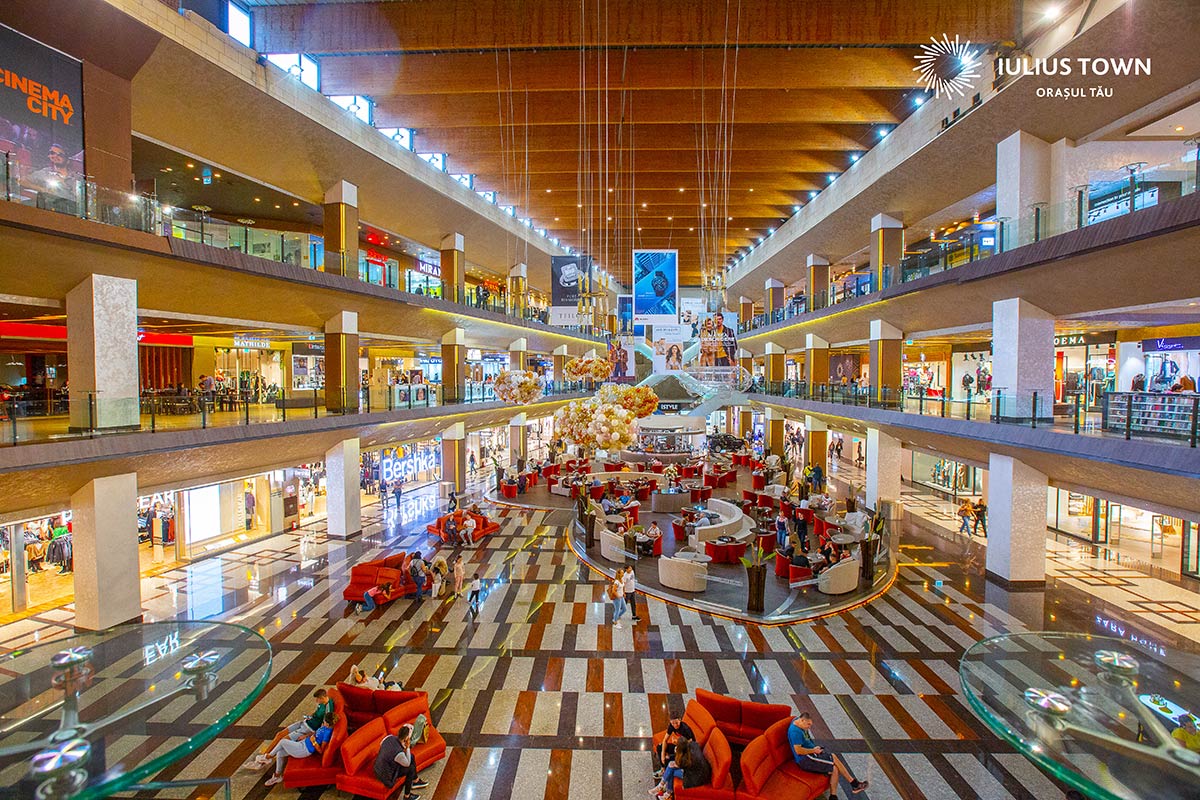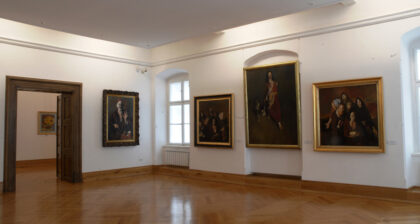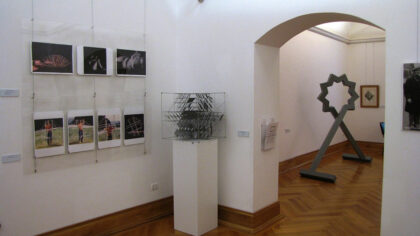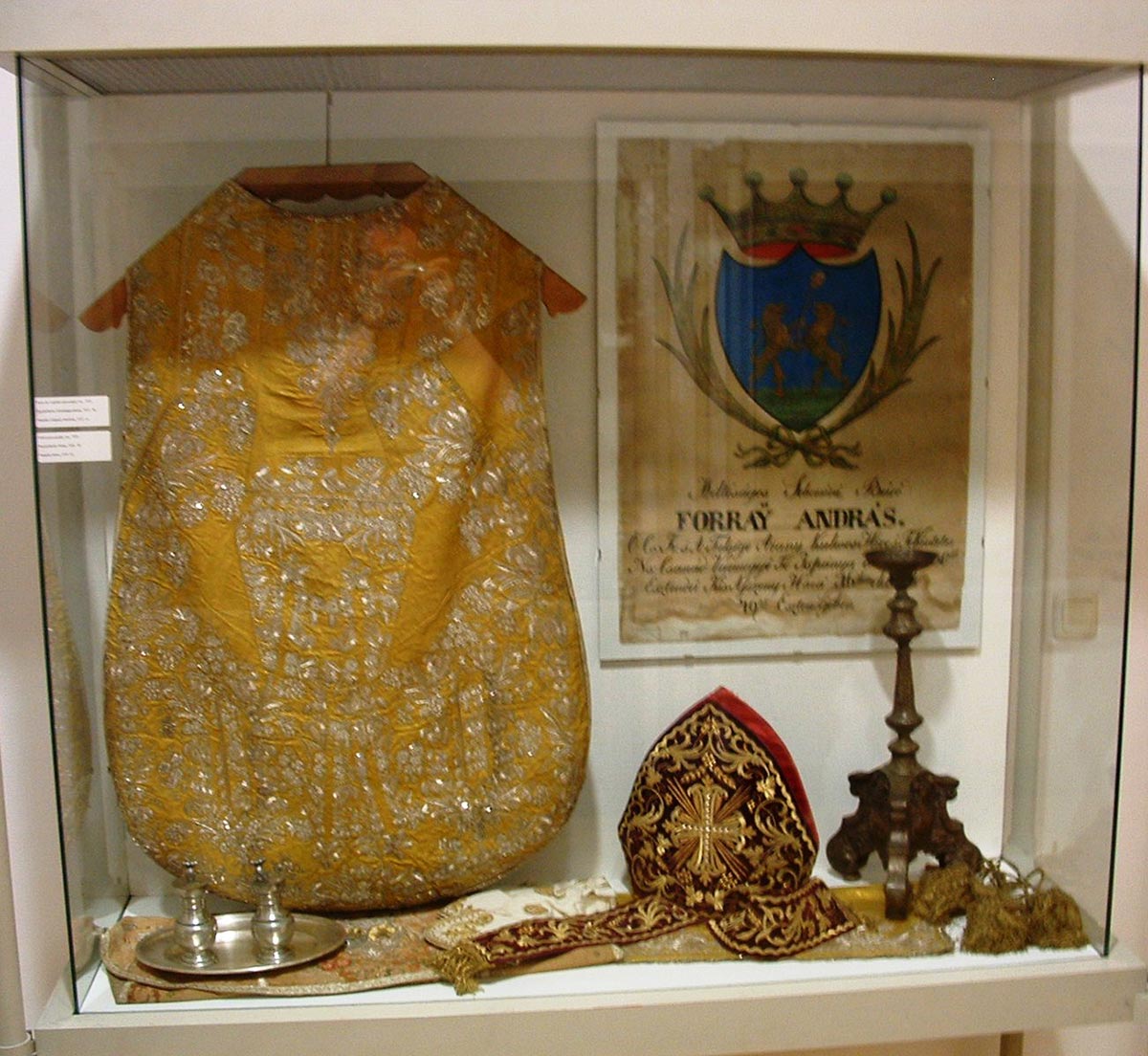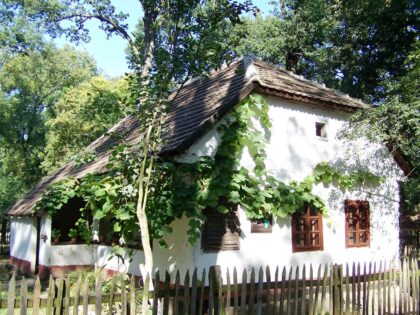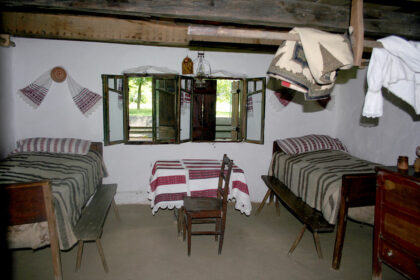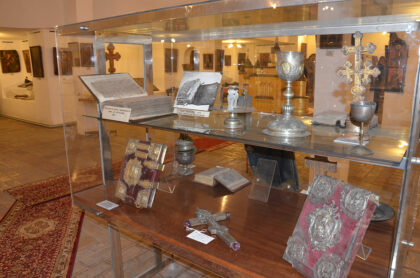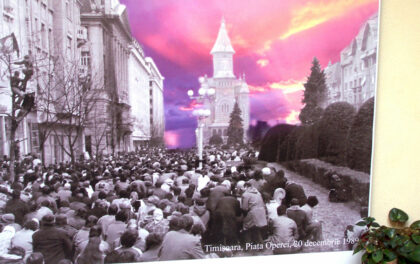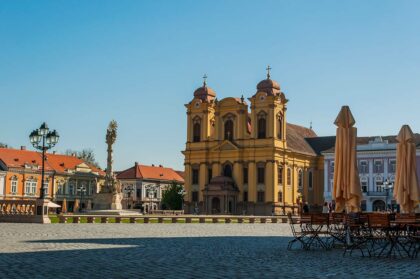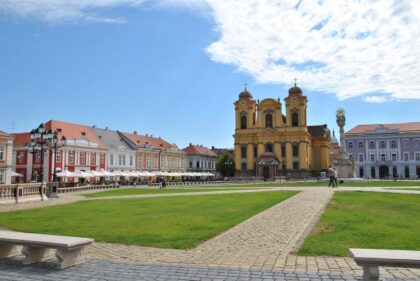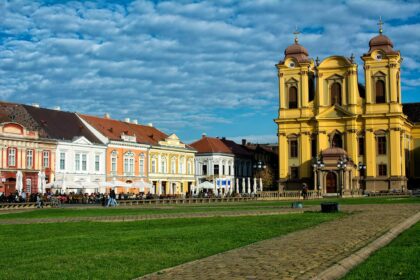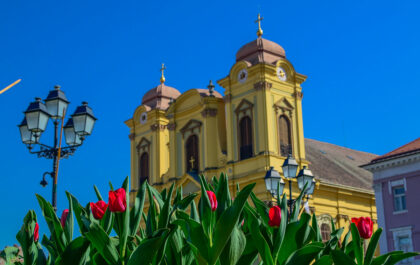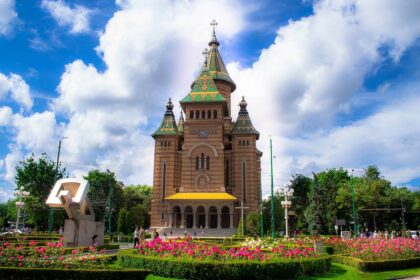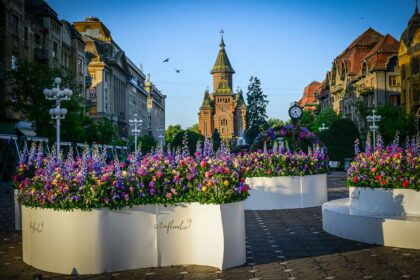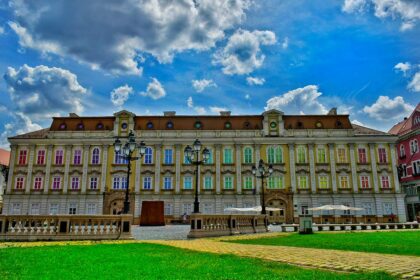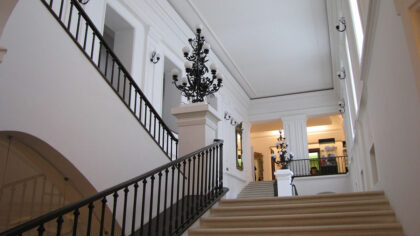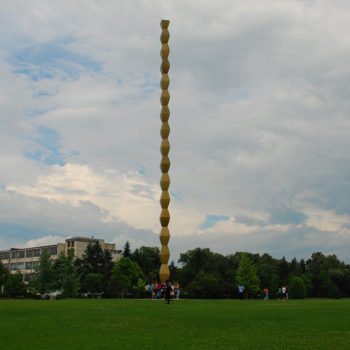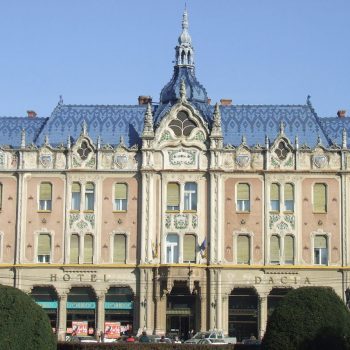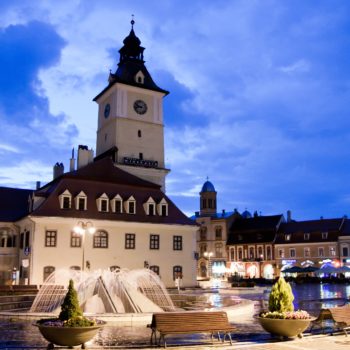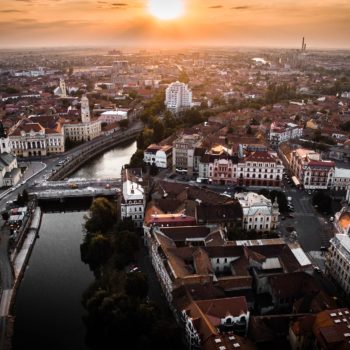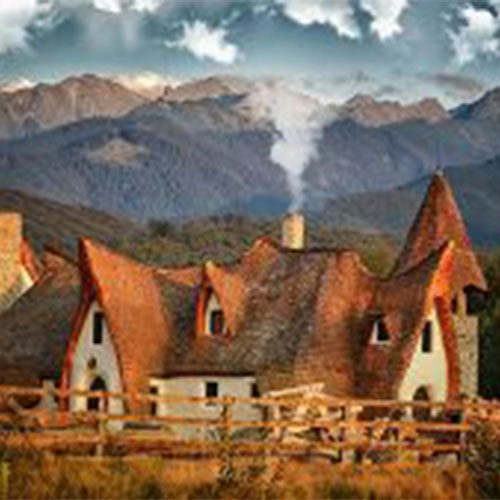Brief description: Timișoara’s charm lies in its distinct cultural life, with an impressive combination of Byzantine, Baroque and Modernist architecture. Some of the city’s most interesting sights are the elegant Baroque buildings around the city’s grand squares.
Timisoara is one of Romania’s most important and beautiful cities. If you’re planning a holiday, you can’t forget to put this destination on your list. You’ll leave here with lots of great memories and lots of great photos.
Discover Timișoara
Timisoara, European Capital of Culture in 2023, awaits you with a wide range of sights, history and exciting multinational cultural activities.
Highlights include the imposing Orthodox Cathedral on Victoriei Square (Opera Square), as well as Union Square with its outstanding architecture and numerous historic buildings. Art and culture lovers will find a variety of theatres, museums and galleries, which offer a fascinating insight into the history and art scene.
Are you interested in hotels, guesthouses and apartments in Timişoara? Please click here!
(Please note: You will be redirected to booking.com for searching, selecting and also possibly booking accommodation!)
More information – Historical Attractions Sightseeing features
Timișoara is located in the south-east of the Pannonian Plain (i.e. in the south of the Western Plain), in the area where the Timișș and Bega rivers diverge.
Timișoara, in translation: “the fortress on Timiș” is the residence and the largest city of Timiș county in the historical region of Banat, western Romania. The name of the town comes from the river Timiș (passing south of the municipality), called Tibisis or Tibiscus by the Romans in antiquity.
The first documentary attestation of Timișoara is quite controversial, being placed by specialists in 1212 or 1266. In 1175 the county of Timiș is mentioned, but the sources do not mention its economic and administrative centre. At the time of its attestation it was part of the Timiș county, an administrative territorial unit of the Hungarian kingdom. The territory later known as Banat, with its administrative centre in “Urbis Morisena” (then Cenad), was conquered by the Hungarians around 1030 and incorporated into the Hungarian kingdom. Being located at a strategic point, from where a large part of the Banat Plain could be controlled, both Timișoara and the function of the Timișș Committee became increasingly important.
Timișoara received a special boost during the reign of King Charles Robert of Anjou, who ordered the construction of a royal palace here following his visit in 1307. During the feudal anarchy, he moved the capital of Hungary to Timișoara.
The appointment of Iancu de Hunedoara as the Timis Committee in 1440 marks a special chapter in the history of Timisoara. Iancu de Hunedoara was known throughout the region for his famous victory over the Ottomans at Belgrade, and was considered a defender of Christianity at the time. He made the town a permanent military camp and his home after moving here with his family. Thus, the fortress remained in the possession of the Corvinists until 1490.
On 20 December 1989, Timisoara was declared the first city in Romania free from communism. Timișoara is a multicultural city, influenced by different ethnic communities, especially German, Hungarian and Serbian, but also Bulgarian, Italian and Greek. The city’s cultural heritage and diversity of cultural offerings are its strengths.
From a tourist point of view, Timișoara has the largest collection of historical buildings in Romania, consisting of the urban ensembles of the Cetate, Iosefin and Fabric districts.
The varied architecture, the Viennese Baroque influences and the multitude of parks have earned Timișoara, as mentioned above, the reputation of “Little Vienna” and “City of Parks”.
Sightseeing features
The city of Timisoara at night
Victoria Square
It is the place where Timisoara was proclaimed the first free city in Romania on 20 December 1989. It was a main boulevard that at the beginning of the 20th century, at the same time as the demolition of the fortress, the centre of Timișoara was redesigned and turned into a square to allow the development of the city.
Around the square there are important cultural institutions such as the Romanian Opera, the National Theatre, the Hungarian State Theatre, the German State Theatre, the Metropolitan Cathedral, the Timiș, Capitol and Studio cinemas, the Banat Museum, art galleries and many shops.
Some of the most important cultural events are also held here in Victoria Square: JazzTM, Timfloralis, FEST-FDR Theatre Festival, Opera and Operetta Festival, Easter and Christmas Fairs, New Year’s Concerts and many others.
Unirii Square
Unirii Square is the oldest historical square in Timisoara and is the site of outstanding Baroque buildings such as the Baroque Palace, the Roman Catholic Dome, the Serbian Orthodox Cathedral, the Palace of the Serbian Orthodox Bishopric and the centrally located Monument of the Holy Trinity.
Over time it was also called Main Square (Hauptplatz), Lord’s Square (Domplatz) and Losonczy Square (named after the Count Stefan Losonczy, who was killed in 1552 when the city was conquered by the Turks).
The name of Union Square was given to it in 1919, because it was here that the Romanian troops that entered Timișoara stopped.
Liberty Square
Liberty Square (originally Paradeplatz, “Parade Square”, then Prinz Eugen Platz, “Prince Eugen Square”) is a historic square in Timișoara which from the beginning housed several buildings with military functions. Here you can find the Garrison Command, the Old Town Hall, the former War Chancellery (next to the Old Town Hall), the Military Casino, and an important baroque monument “Monument of St. Mary and St. John Nepomuk”.
In 1848, with the outbreak of the Hungarian revolution, the name of the square was changed to Freedom Square.
Timișoara Fortress
It is a historical fortress on the site and around which the city of Timisoara was built. It was until the beginning of the 20th century the largest military fortification in bastion system on the Romanian territory. The fortress had three “rings” of fortifications and included 9 bastions. However, over time, the walls enclosed the city centre and hindered its development, so in 1892 it was decided to demolish them.
The only bastion remaining to this day, which stands testimony to the gigantic fortification that once existed, is the MARIA THERESIA BASTION.
Timisoara Parks
Timisoara’s parks give it the reputation of a city of flowers and parks, due to their large number, the fact that you can cross the city, passing from one park to another and especially due to the prestige that the city has gained since the 19th century, when rose growers, famous throughout Europe, lived here.
Nowadays the parks host many of Timisoara’s cultural events, such as Bega Bulevard, the Festival of Hearts – international folklore festival, Timisoara’s Ruga, film festivals, children’s festivals, or delight visitors with tens of thousands of tulips during the Timfloralis festival.
Bega
Until the 18th century the area of Timișoara was a marshy area. In order to drain the marshes and for the economic and social development of the city it was necessary to build a canal. The construction of the Bega canal began in 1728, and in 1732 the first ship sailed from Timișoara on the Bega, the Tisa and then the Danube to Pancevo in Serbia. The total navigable length of the Bega Canal was 116 km.
Today the Bega is important for public transport and recreational boating in Timisoara, as well as playing an important role for sport and recreation. On the banks there are bicycle paths and footpaths for walking and running.
Iulius Town
It’s a real little town in the centre of the city, one of the main attractions for business, shopping and entertainment in the West. Built according to a modern urban concept, the complex of buildings houses hundreds of shopping outlets with national and international brands, restaurants and cafes, fitness centres, cinemas, as well as office space and state-of-the-art conference rooms.
The landscape also includes the largest suspended park in Romania, Iulius Garden, covered with lush vegetation, landscaped with water mirrors and fountains.
Timișoara Museums
Whether you visit the Museum of Art, with works of Romanian and European art, the Memorial of the Revolution of December 1989, showing photos and films taken during the Revolution of 1989, or the Village Museum, the only open-air museum in the western part of the country, the National Museum of Banat with exhibitions from Timișoara’s and Banat’s past or Popa’s Museum, of the world’s fastest caricaturist, the Museum of the Communist Consumer, with objects from Romania from the 1980s, the Museum of the Metropolitan Cathedral, with religious art objects, or other contemporary art collections and galleries, Timișoara has something to delight your eyes, completing the image of a cosmopolitan and diverse city.
Roman Catholic dome
After more than 700 years, in 1733 the residence of the Roman Catholic bishops was moved from Cenad to Timișoara, where the first cathedral became the church of the Jesuit monks. The plan of the present dome was made in the Baroque style in Vienna under the guidance of the architect Josef Emanuel Fischer von Erlach, according to other opinions by Johann Jakob Schelblauer, Vienna’s technical advisor.
The foundation stone was laid in 1736 and work began in 1738. Because of the marshy terrain, the cathedral was built on wooden pillars. It is 55 m long, 22 m wide, 16.90 m high and 35.5 m high with towers. The first bells were cast in 1763, the clock was installed in 1764. Work was completed in 1774.
By decree of Empress Maria Theresa, the dome was elevated to the rank of the first church of Timișoara in 1756. Between 1788 and 1790, during the fighting between the Ottomans and the Austrians, it became a salt depot. In the siege of 1849 the building was seriously damaged. Between its walls is preserved a work by the painter Michelangelo Unterberger, St. George on horseback fighting the dragon (1754). He also painted the altars of the Stephansdom in Vienna. The dome has 6 side altars by the German painter Johann Adam Schöpf.
In gratitude for their support, the two large statues at the main altar represent the patron saints Charles VI and Maria Theresa. The first baroque organ was built in 1767 by the Viennese Paul Hanke and the present one in Timișoara in 1908.
Orthodox Metropolitan Cathedral
It is one of the city’s iconic buildings. It was built between 1936 and 1946. Its architectural style harmoniously combines elements of old Romanian-Moldovan architecture.
It has 11 towers, covered with coloured glazed tiles and a height of 83 m, being one of the largest churches in Romania. In the basement of the cathedral there is a museum with a rich collection of religious art.
Baroque Palace
The Baroque palace dates from the 18th century. It is one of Timișoara’s most beautiful buildings, enriching the city’s precious architectural heritage.
In the middle of the 18th century it was set up as a residence for the civil governor of Banat. Franz Liszt gave a concert in the great hall of honour, the Baroque Hall, in 1846. Since 1984 it has housed the Art Museum.

